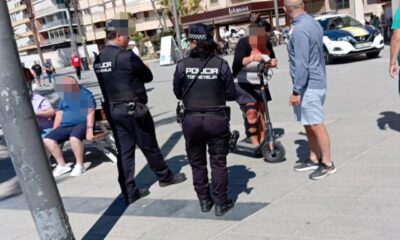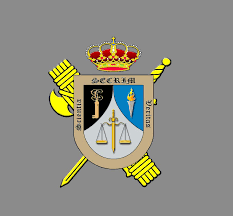

Driving in Spain
Intensive control of seat belts and child restraints this week
Surveillance will be carried out on all types of roads and all the means available to the General Directorate of Traffic will be used (helicopters, drones or automated control cameras). In 2022, 142 people traveling in cars and vans who were not wearing seat belts at the time of the incident died on interurban roads. …
The post Intensive control of seat belts and child restraints this week first appeared on N332.es – Driving In Spain.
Surveillance will be carried out on all types of roads and all the means available to the General Directorate of Traffic will be used (helicopters, drones or automated control cameras). In 2022, 142 people traveling in cars and vans who were not wearing seat belts at the time of the incident died on interurban roads. A report from the National Observatory for Road Safety reflects that there are significant differences in the use of these devices based on gender, age or location within the vehicle, among other factors. Child restraint systems are mandatory for minors with a height equal to or less than 135 cm, being recommended up to 150 cm.
In Spain it is mandatory that minors with a height equal to or less than 135 cm correctly use the child restraint system appropriate to their size and weight, being recommended up to 150 cm
The General Directorate of Traffic (DGT) plans to develop this week, until Sunday the 12th, a new surveillance and control campaign focused on the use of seat belts and child restraint systems.
The fundamental objective is that all the occupants of the vehicles, adults or minors and travel in the seat they travel, make use of the seat belt or the appropriate child restraint system (CRS). To do this, the agents of the Traffic Group of the Guardia Civil and those of the regional and local police who join the campaign, will increase the vigilance of these security devices on all types of roads.
Surveillance of its use from the air will also be intensified, with the helicopters and drones available to the DGT, as well as with the automated control that is carried out through the 245 cameras placed both on conventional roads and on roads high occupancy.
The campaign joins the campaign organised by RoadPol (European Road Surveillance Network) which, within the European Union, wants to influence the basic importance of these restraint systems.
DATA THAT SPEAKS FOR THEMSELVES
Despite the fact that the data shows that the seat belt is the device that has saved and saves the most lives on the road, since its effectiveness halves the risk of death in the event of an incident, even today 25% of those killed in road traffic incidents still do not use it. In fact, in 2022, 142 people traveling in cars and vans who were not wearing a seat belt at the time of the incident died on interurban roads. The Traffic and Road Safety Law penalises not wearing a seat belt with the loss of 4 points, the same ones that are deducted for not using the appropriate child restraint system or not doing it correctly.
SEAT BELT USE REPORT
The National Road Safety Observatory recently prepared a report entitled “Use of seat belts in passenger cars on interurban roads 2017-2019” presenting an analysis of the variables involved in the use of seat belts in passenger cars. 12 years of age or older who were killed or injured hospitalised within 30 days in traffic incidents that occurred on this type of road and in those three specific years.
The study aims to find out if the variables analysed are statistically independent or not, and interesting conclusions can be drawn from it. For example, the report shows that there is a dependency between seat belt use and gender (men use it in a significantly lower percentage than women), age (the older, the more they use of this device) or the location of the vehicle passengers (greater use of front seats), among others, while other factors such as the type of occupant or the month in which the incident occurred did not show significant differences.
IMPORTANCE OF USING THE RIGHT CHILD RESTRAINT SYSTEMS
For children, the use of child restraint systems is even more important as data shows that nine out of ten serious or fatal child injuries would have been prevented if mandatory restraint systems had been used and that, in the event of an incident, injuries are reduced by up to 75% with proper use of them.
Minors must be seated in the rear seats, except when the vehicle does not have them, they are already occupied by other minors or it is not possible to install all child restraint systems in them, and it is recommended that they travel in the opposite direction to travel, if possible, up to 4 years, and obligatorily up to 15 months.
The post Intensive control of seat belts and child restraints this week first appeared on N332.es – Driving In Spain.
-

 News2 weeks ago
News2 weeks agoYour Task for This Week is to Seek Out a Monument – The Week Ahead
-

 Health2 weeks ago
Health2 weeks agoQuirónsalud Elche and Quirónsalud Gran Alacant strengthen their services with the incorporation of a new team specialised in advanced ophthalmology
-

 Court News2 weeks ago
Court News2 weeks agoMan in court accused of trying to kill ex-partner with an axe
-

 Court News1 week ago
Court News1 week agoSupreme Court confirms suicide of a supermarket worker was a work accident






















